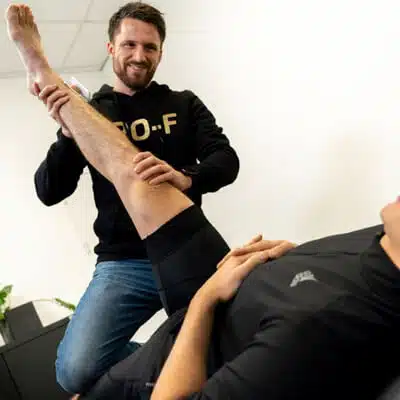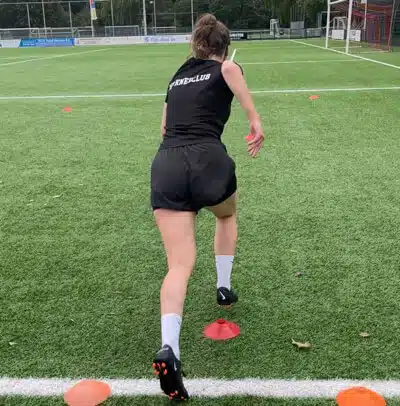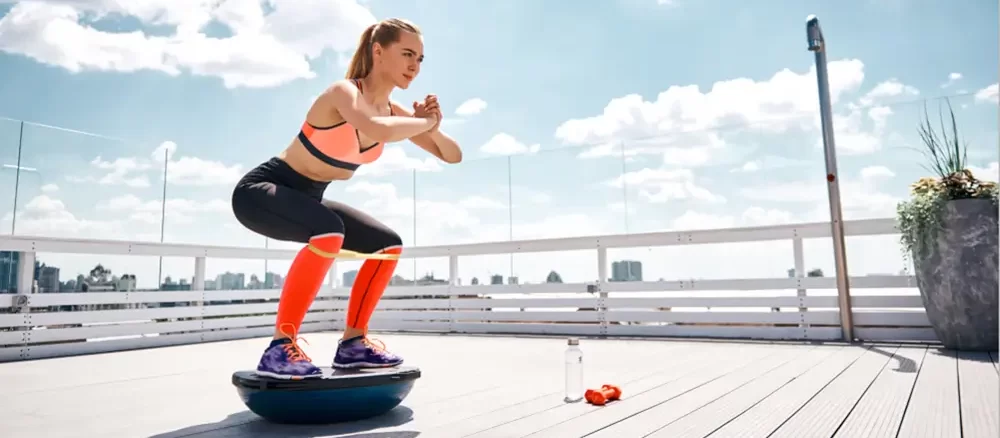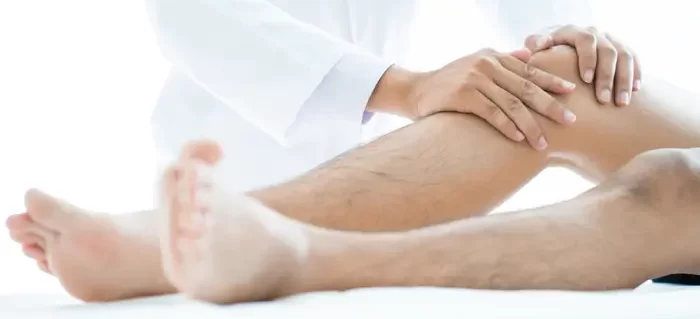
Why does anterior cruciate ligament rehabilitation take so long?

Written by Mathijs van der Meer

Co-written by Wouter Welling
An anterior cruciate ligament rehabilitation takes an average of 9 to 12 months and sometimes longer. After rehabilitation, more than 90 percent of amateur athletes expect to return to their former level of sports without restrictions. Unfortunately, research shows that only two in three succeed in doing so. In this blog, we describe why returning to sports is a complex and challenging process and answer the question: how and why does anterior cruciate ligament rehabilitation take so long.
An anterior cruciate ligament rehabilitation is complex
Anterior cruciate ligament injuries are unfortunately a major problem within amateur and professional sports. A large number of well-known Dutch top athletes, for example, have a history with an anterior cruciate ligament injury. In 2020, for example, we were able to follow the rehabilitation of soccer player Memphis Depay. After 6.5 months, he successfully made his return to his club. Unfortunately, return to sports is not guaranteed, for example, handball star Estavana Polman tore her anterior cruciate ligament again in one of her first matches. Rehabilitation after anterior cruciate ligament surgery is an individual and dynamic process. This means that the process looks different for everyone. Success, unfortunately, cannot be taken for granted.
In this blog Wouter Welling his experiences and research results on a safe return to sport after anterior cruciate ligament reconstruction. He is an exercise scientist working at PRO-F in Enschede. In 2022, he received his PhD on the subject of return to sport after anterior cruciate ligament reconstruction from the University of Groningen.

Why do you need an anterior cruciate ligament when playing sports?
The anterior cruciate ligament keeps the tibia (the lower leg) from moving too far forward relative to the femur (upper leg). In doing so, the anterior cruciate ligament acts to inhibit the forward movement of the lower leg relative to the upper leg. In addition, the anterior cruciate ligament has a stabilizing role in rotational movements that are often made, for example, in pivoting sports. These are sports that involve a lot of turning and turning, such as soccer, field hockey, handball or basketball.

What are the consequences of a torn anterior cruciate ligament?
When the anterior cruciate ligament tears, it means that the inhibiting factor of sliding the lower leg is missing. As a result, the knee loses stability and the patient may feel like he or she is slipping through the knee because of the instability that has occurred.
The tearing of the anterior cruciate ligament is also called the heart attack of the knee called. The knee and movement system are disrupted by a lack of stability and proprioceptive feedback. The body must learn to deal with this new situation. In order to return to sports, reconstruction of the anterior cruciate ligament with a body's own tendon is often chosen. This largely restores stability, but this does not restore proprioception. After all, you are replacing a ligament with a tendon. The lack of proprioception reduces the knee's ability to respond via quick reflexes. This is possibly one of the explanations why there are recurrent injuries.
During anterior cruciate ligament rehabilitation, the movement system must be restored, for example, muscle strength and reflex movement. Muscle strength is in many cases greatly reduced by the period of inactivity after the injury and surgery. Moving normally and healthily again requires long-term and intensive rehabilitation. This rehabilitation also largely determines whether you recover successfully and can play sports again.

Field training is an important part of anterior cruciate ligament rehabilitation.
Why does return to sports after anterior cruciate ligament reconstruction take so long?
After anterior cruciate ligament surgery, the knee must first heal. The anterior cruciate ligament must grow in, muscles must regain strength and learn to work together. This is a normal biological process and takes about the same amount of time in everyone. This is a major reason that recovery takes about 9-12 months.
In addition, sport is complex and athletes must be prepared for that. The body has to deliver a lot of physical forces at unexpected moments, under changing conditions and often with time pressure. You have to be able to react quickly to situations that you cannot properly assess in advance. Think of changes of direction, dodging a tackle or landing after a duel in the air. For this you need sufficient muscle strength, but also a good landing technique and quality of movement.
Thus, returning to the sports field is challenging because the body is exposed to complex, fast and powerful movements. Re-learning these movements must be built up incrementally. From simple movements to complex movements with dual tasks. Strength must be built up until the legs are fully strengthened.
Is everyone returning to sports (are we there yet?)?
Thus, resuming sports after anterior cruciate ligament reconstruction is a challenging goal. Unfortunately, this goal is not guaranteed and the numbers show this. About 65 percent return to the old level of sport. Once back at the old sports level, there is about a 25 percent chance that the same cruciate ligament or the cruciate ligament on the other side will tear. To assist in determining whether a person is ready to return to sports, physical therapists use a variety of tests.
Summary
An anterior cruciate ligament injury is a common injury in both amateur and professional athletes. Rehabilitation takes a long time because biological recovery takes ample time, and sports consist of complex movement patterns that require extensive practice. After anterior cruciate ligament reconstruction, only two-thirds return to the sports field. When you do get ready to return to sports can be read in this blog: Testing and measurement in anterior cruciate ligament rehabilitation: the sense and nonsense.
Have you rehabbed successfully and have tips for others, please leave a comment below this blog.




